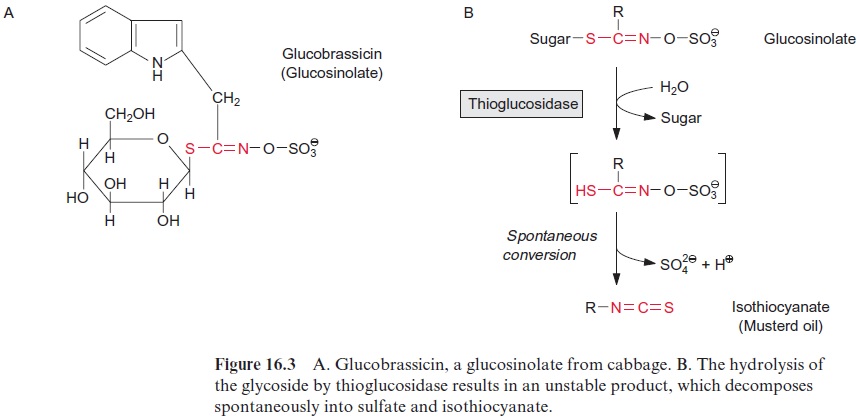Chapter: Plant Biochemistry: Secondary metabolites fulfill specific ecological functions in plants
Some wounded plants emit volatile mustard oils
Some wounded plants emit volatile mustard oils
Glucosinolates, also called mustard oil glycosides, have a similar protective function against herbivores as cyanogenic glycosides. Glucosinolates can be found, for instance, in radish, several cabbage varieties, and mustard. Cabbage contains the glycoside glucobrassicin (Fig. 16.3), which is synthe-sized from tryptophan.The hydrolysis of the glycoside by a thioglucosidase results in a very unstable product from which, after the liberation and rear-rangement of the sulfate residue, an isothiocyanate, also termedmustard oil, is spontaneously released. Depending on the cellular pH nitriles, thiocy-anate and oxazolidin 3-thion can also be formed as glucosinolate products. Mustard oils are toxic in higher concentrations. As is the case of the cya-nogenic glycosides, glucosinolates and the hydrolyzing enzyme thioglucosi-dase are also located in separate compartments of the plant tissues. The enzyme comes into contact with its substrate only after wounding. When cells of these plants have been damaged, the pungent smell of mustard oil can easily be detected (e.g., in freshly cut radish). The high glucosinolate content in early varieties of rape seed made the pressed seed unsuitable for fodder. Nowadays, as a result of successful breeding, rape seed varieties are cultivated without glucosinolate in the seeds and the pressed seeds are a valuable fodder due to their high protein content.

Related Topics